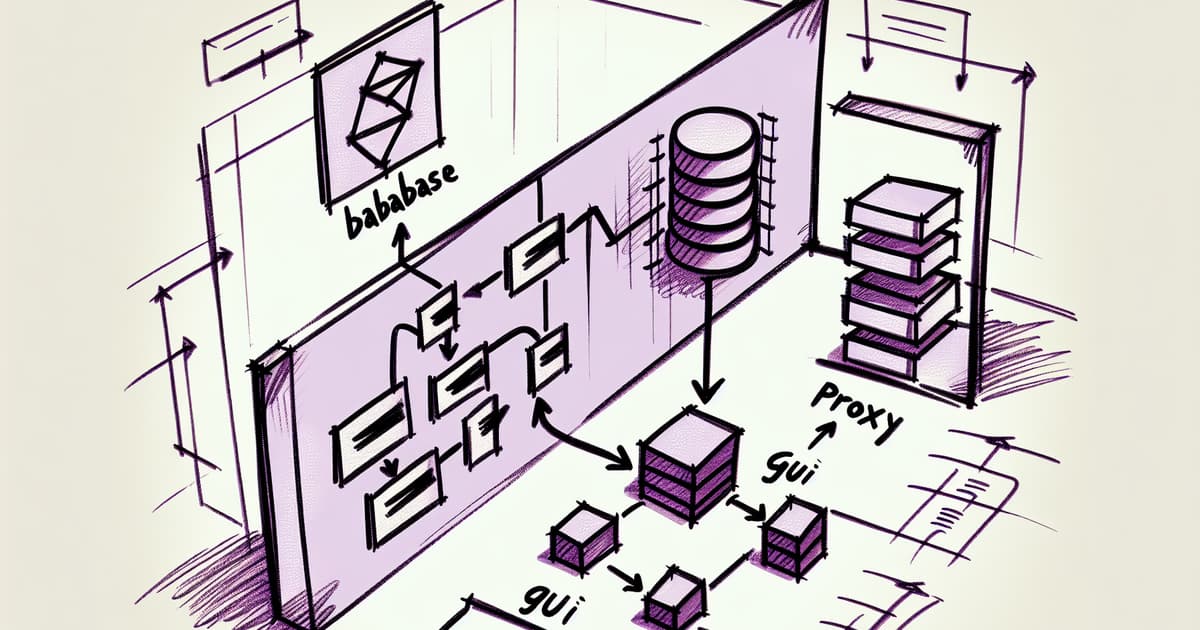We can't find the internet
Attempting to reconnect
Something went wrong!
Hang in there while we get back on track
Ecto

Elixir's dynamic and functional nature, along with the Ecto library, makes it an ideal choice for building a variety of applications requiring database interactions. Ecto provides a structured schema and query language that facilitates the seamless integration of database operations within Elixir applications. For instance, whether it's experimenting with geocoding features or handling complex database migrations in a production environment, Ecto offers the tools and flexibility needed for developers to implement robust solutions to data-related challenges. Its compatibility with databases, combined with Phoenix and LiveView, allows the creation of modern web applications that rival conventional JavaScript frameworks.
Observers of the BEAM runtime have praised Elixir's tools for monitoring and debugging, highlighting their effectiveness in maintaining application health and performance. Advanced features such as managing resource authorization or implementing multi-tenant environments also underline the capabilities of Elixir and Ecto to handle sophisticated requirements. Specifically, developers have leveraged Ecto to run large-scale, zero-downtime migrations, indicating how vital precise management and low-risk strategies are for such operations.
When it comes to testing, Elixer presents robust options. Techniques for testing external databases or simulating user authentication and authorization in multi-tenancy setups are just a few examples of how Ecto's flexibility aids developers. Adding to this, the practical deployment experiences shared for handling large data volumes with system resources such as SQLite and leveraging Elixir's efficiency, reinforce the language's standing in web and database-related tasks. Moreover, the ability to interleave Elixir's unique features like macros and telemetry for metaprogramming and observability respectively, only adds to its appeal among software developers.
Apart from the backend utility, Elixir, with libraries such as LiveView and Nerves, has also ventured into the realm of real-time applications and energy management platforms. The resilience and fault tolerance inherent in its design have been key in distributing workloads and managing infrastructure effectively. The educational progress in Elixir is noteworthy, with new resources and community insights constantly emerging to support both beginner and experienced developers alike. The discussions around Elixir at conferences and in articles provide a glimpse into the vibrant ecosystem that continues to evolve and broaden the applicability of this modern language across various domains.

Testing Read-Only External Database Connections in Phoenix
Peter Ullrich provides a detailed guide on how to test an external, read-only database connection in Phoenix. He suggests creating a new Ecto.Repo for the external database connection and configuring it to be read-only. He also provides steps for creating migrations and using a Factory Delegator to populate the test database.

Ensuring Unique Data Entries in Phoenix Applications
George Arrowsmith explains in his article "Foolproof uniqueness validations in Phoenix with Ecto" how to validate the uniqueness of data in a Phoenix app using the Ecto.Changeset module. He discusses the limitations of the validates_uniqueness_of validator in Rails and introduces the use of unsafe_validate_unique and unique_constraint functions in Ecto for a more secure and user-friendly validation process.

Optimizing Database Queries Using Elixir's Ecto and Telemetry
John Curran's article "Eliminate Slow Queries with Ecto Telemetry" explains how to identify and fix slow database queries using Telemetry in Elixir. Telemetry allows us to pinpoint performance bottlenecks and visualize database performance with graphs and charts.

Best Practices and Challenges with Dynamic Repos in Elixir's Ecto
Sam McDavid discusses the lessons his team learned while working with Ecto.Repo.put_dynamic_repo/1. They needed to store data for specific customers in a separate database with their own encryption keys, and the talk outlines their approach, the infrastructure changes required, and the challenges they faced.

Mastering Ecto.Query's fragment Macro in Elixir
Alexander Webb presents a talk at ElixirConf 2023 about Ecto's query DSL and how to use the `fragment` macro to unlock advanced Postgres query features and combine them with PG's JSON support and aggregates to write performant queries returning nested JSON.

Challenges and Strategies in Executing Zero-Downtime Migrations in Elixir
Tyler Young presents a case study on the difficulties of running a large-scale, zero-downtime data migration, exploring why success in this area looks very different from fixing a bug or shipping a new feature, and sharing patterns for successful management to build a low-stress and low-risk culture for zero-downtime migrations.

The Comprehensive Capabilities of Elixir and Phoenix
Jason Stiebs explains why Elixir and Phoenix are an excellent choice for developers, highlighting the various features and advantages of the language and framework. Learn about the built-in support for concurrency, distribution, RPC, low resource usage, and more!

Organizing Phoenix Application Code through Context Structuring
Ahmed Mansour discusses the technique of structuring Phoenix contexts by splitting them into layers, allowing for better organization and reduced complexity. This approach helps create consistent and predictable code, making the context a calmer place to work with.

Implementing an Elixir-Based Distributed Router for GDPR Compliance
De Wet Blomerus shares the story of building a globally distributed router using Elixir to enhance latency, hold on to connections, and route traffic to the correct region for GDPR compliance.

Building a Database Interface and PostgreSQL Proxy Using Elixir
Michael St Clair recently showcased how he utilized Elixir, Ecto, and LiveView to build a database GUI and discussed the usage of gen_tcp to create a Postgres proxy, along with the role of binaries in the Postgres message protocol context.

Data Validation Techniques in Phoenix for Elixir
David Sulc explores how to avoid bad data and validate data at the boundary of a Phoenix application for Elixir. This post covers techniques such as pattern matching and guards to ensure the data remains clean.

Introduction to the Permit authorization library for Elixir Phoenix apps
Michał Buszkiewicz explores the features of the Permit library for managing resource authorization in Phoenix, LiveView, and Ecto. Discover how Permit automatically converts authorization conditions to Ecto queries and provides a mechanism for running them in controller and LiveView actions.

Exploring Elixir's Unique Observability Features
Lars Wikman shares insights on the observability features unique to the BEAM runtime and how Elixir has excellent tools for monitoring and debugging applications.

Streamlining MLOps with Elixir's Capabilities
Sean Moriarity shows how to do MLOps in Elixir, simplifying the deployment of machine learning models without much effort.

Integrating Prometheus Metrics and Grafana Dashboards with Elixir using PromEx
Alexandre Moreira Xavier shows you how to build your own Prometheus metrics using PromEx. PromEx is a library made by Alexander Koutmos that helps you integrate your Elixir application with Prometheus and Grafana.

An Overview of Elixir's Syntax
In this blog post titled "Unpacking Elixir", Lars provides a thorough exploration of the Elixir programming language, explaining its syntax, conventions, features, and interop with Erlang. Lars discusses various aspects of the language, such as modules, functions, pipes, pattern matching, macros, and more, offering insights and observations along the way.

Implementing Unaccented Name Search in Postgres via Ecto
In this blog post by Peter Ullrich, Peter discusses the problem of efficient name search in Postgres, specifically when dealing with special symbols and accents. He proposes the use of the "unaccent" function in Postgres to treat words with and without accents equally, and also suggests adding a GIN index for faster search performance.

Exploring Flop for Elixir Data Handling
In Episode 166 of the Thinking Elixir podcast, Mathias Polligkeit discusses his creation of the flop library, which provides a convenient and reusable solution for filtering, sorting, and pagination in Elixir projects. He also introduces the flop_phoenix package, which includes heex components for building filter forms and tables. It's an interesting exploration of a useful library for Elixir developers.

Implementing Dynamic Forms using Phoenix LiveView Streams
Berenice Medel provides a step-by-step guide on how to create a dynamic list component using LiveView Streams and enhanced form features in Phoenix LiveView 0.18/0.19. The guide covers how to add, edit, and delete items in a list component, as well as optimizing memory usage by using Streams.

Deploying Elixir Apps with structure.sql in Production Environments
Mark Ericksen discusses the problem of loading a structure.sql file in a production environment where mix is not available after building a mix release. He provides a solution that involves committing the structure.sql file to version control, adding the postgresql-client package to the Dockerfile, and updating the migrate/0 function in the release.ex file to run the structure.sql file when needed.

Handling Elixir Project Development Post Ecto Dump
Mark Ericksen offers a solution for developers who have deleted old migration files and are now facing a chicken-and-the-egg problem when bootstrapping a new server or setting up a clean database. By adding a step in the mix.exs file's ecto.setup task and using the ecto.load command with specific flags, developers can safely continue development with a structure.sql file generated from mix ecto.dump and without the older migrations.

The High Quality of Elixir Documentation
Jason Stiebs explains that the documentation for the Elixir programming language is comprehensive and easy to navigate, providing extensive discussion, guides, examples, and doctests. He also highlights the usefulness of Hex, a resource for Elixir developers that offers online hosted docs, code diffs, and a list of packages that depend on a library.

Comprehensive Search for Elixir Packages
In this blog post, Jason Stiebs shares his experience of building a search engine for HexDocs using SQLite FTS5 and LiveView. He walks through the process of downloading, cleaning up, and indexing the HexDocs data, as well as creating a better search query for improved search results.

Managing Many-to-Many Relationships in Elixir with Ecto and LiveView
Berenice Medel discusses how Ecto has introduced two new options to make working with associations easier. These options allow users to sort elements in a specific order and remove specific records from an association, and they can be easily passed from LiveView when working with forms.

Decoupling Phoenix Forms from Ecto Changesets
German Velasco discusses how to separate the UI form from the Ecto changeset in Phoenix. He explains that the to_form/2 helper can be used to back forms with either changesets or regular maps and also automatically handle errors.
© HashMerge 2025